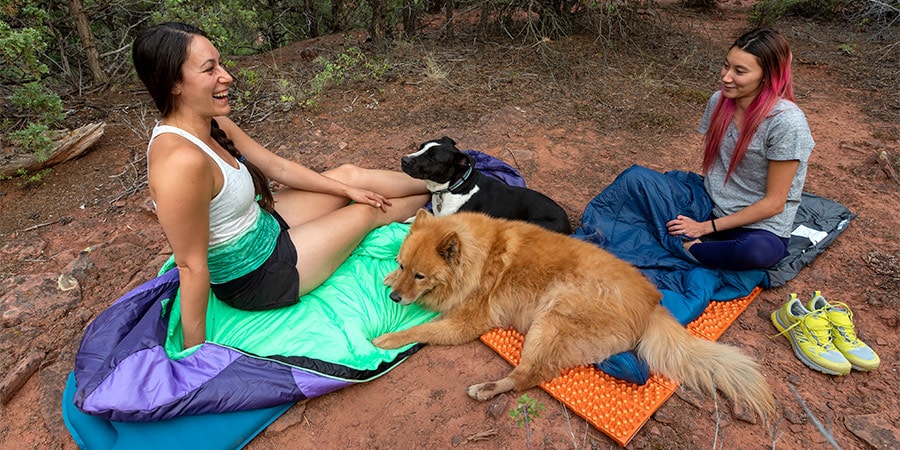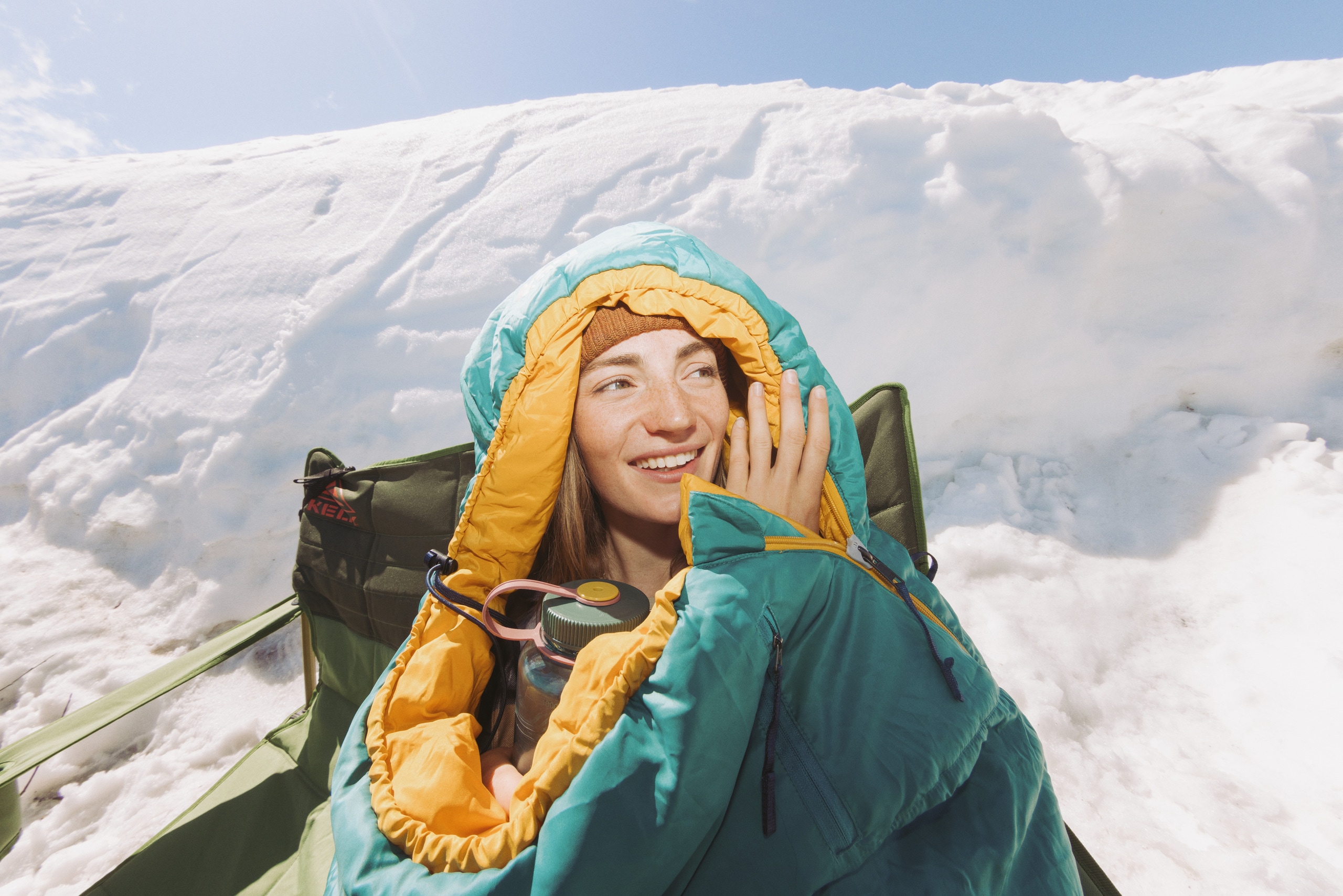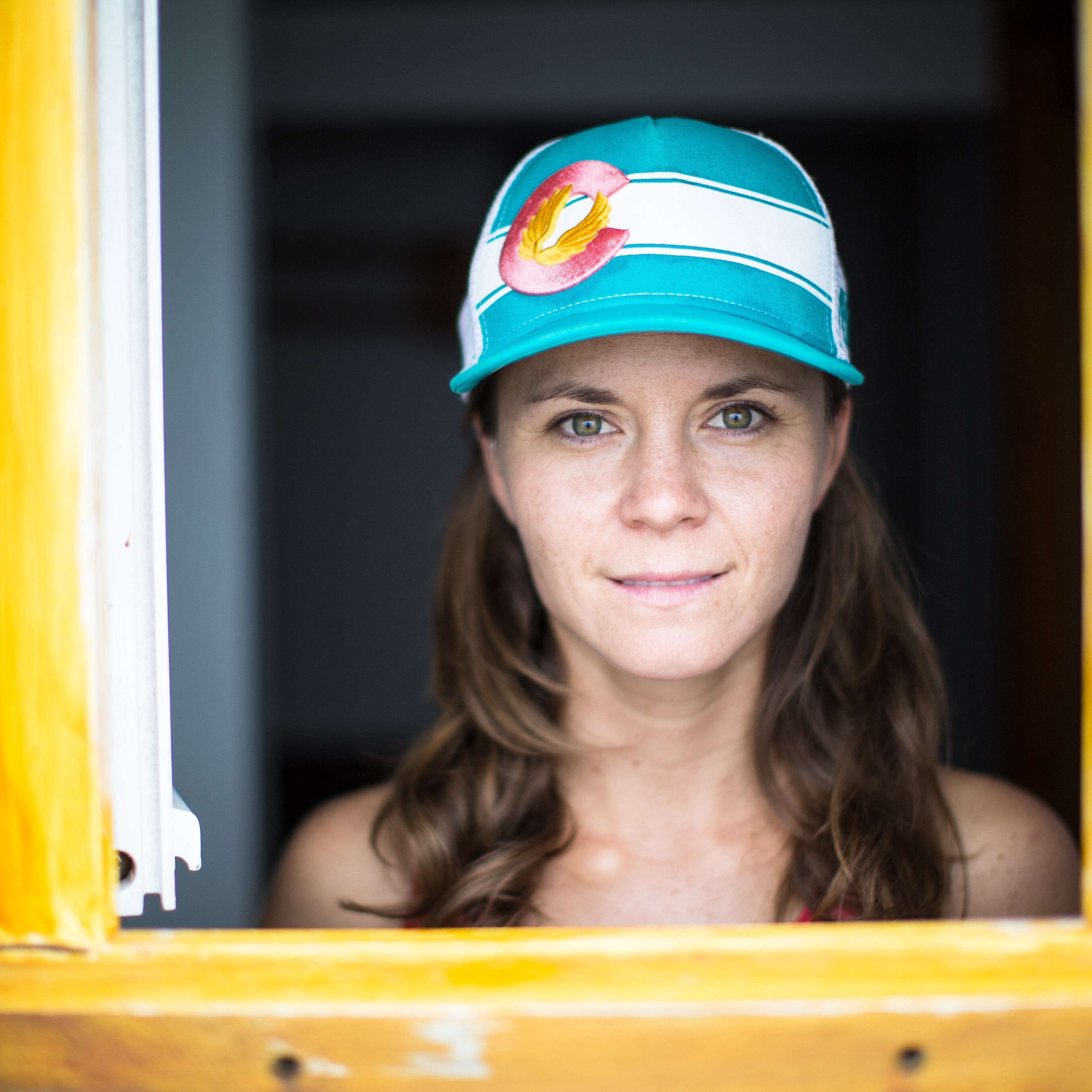No one likes being cold, but finding a warm sleeping bag at a more friendly price point may feel tougher than shivering through the night. High-quality affordability has historically been a misnomer. But that changes with these sleeping bags, which make it easier to spend a comfortable night under the stars without blowing your bottom line.
Our two favorite budget sleeping bags are great for car camping or backpacking and boast different temperature ratings, levels of packability and weights. But they do both have one thing in common: They ring in at around $100 or less. Now you're one step closer to your next—or first—camping adventure.
Want to create a sleep system? Read our Best Budget Sleeping Pads to find a match for you pad.
Test Results
- Best Budget Sleeping Bag for Camping: Coleman Kompact 30 Rectangle Sleeping Bag
- Best Budget Sleeping Bag for Backpacking: REI Co-op Trailmade 20 Sleeping Bag
Best Budget Sleeping Bag for Camping
Coleman Kompact 30F Rectangle Sleeping Bag
Score 92
Temperature Rating (F) 30 degrees (F)
Weight 4 lbs. 13.6 oz.
Insulation Type Synthetic
Fits Up To (in.) 71 inches
It’s a rarity for sleeping bags to receive rave reviews for spaciousness, but that’s exactly what happened with the Kompact 30F. Coleman opted to ditch the mummy shape in favor of a rectangular bag, but also widened the shoulders and hip girth to a whopping 66 inches, giving campers four extra inches of wiggle room in the shoulders when compared to standard sleeping bags. We had two testers log more than 9 nights in the Kompact and each gave it a 9/10 for comfort. “[The bag] was super comfortable and felt so plush,” said one tester after a trip to Lebanon Hills Campground in Minnesota.
The Kompact isn’t designed for backpacking (not with that weight!), but it still held its own for packability—especially considering how roomy it is when unfurled. It packs down to roughly the size of a pair of side-by-side, two-liter soda bottles, so it won’t crowd the back of your trunk. The bag is filled with synthetic insulation which doesn’t compress as well as down, but it still surprised our testers with its relatively small size. “Compared to similar synthetic sleeping bags, it packs down very well,” reports our tester after four nights in New Mexico’s Gila National Forest. Bonus: Coleman includes the brand’s “Roll Control” system, which is basically a toggle and loop system that helps keep the bag straight while rolling. One tester called this “very helpful” but still struggled to get it back inside the manufacturer’s stuff sack.
Speaking of insulation: Coleman keeps the price down with synthetic insulation and cheaper materials. This does mean it’s not as environmentally-friendly as other options, but durability is still solid — especially with the brand’s five-year warranty. Considering the temperature rating and the price, we think this bag is a screaming deal. Buy here.
Bottom Line: The Kompact 30F expands on the classic rectangular design to give you plenty of room to wiggle, plus ample cushion to keep you cozy on a car camping trip and the durability to last you many seasons—all for a very affordable price.
Testing Stats:
- Nights Out: 9
- Testing States: Minnesota and New Mexico
- Best testing story: One tester couldn't get over the Kompact 30's vibrant colorway. “Oh my gosh, I love crossing guard yellow so much! It’s a Virgo dream come true to sleep in a high-viz bag, and I was so happy.”
Best Budget Sleeping Bag for Backpacking
REI Co-op Trailmade 20 Sleeping Bag
Score 88
Temperature rating 21 degrees (F)
Insulation Synthetic
Fill Polyester (98% recycled; bluesign approved)
Weight Short - Left Zip
Versions Short, short wide, regular, regular wide, long, long wide
Sustainability features Contains materials that meet the bluesign criteria, from a Climate Neutral Certified brand
Backpackers looking for value instead of ounce counting will love the eco-friendly materials and price point of the Trailmade 20 sleeping bag. It’s atypical for sleeping bags under $100 to have any focus on sustainable materials — responsibility costs money, unfortunately — but the Trailmade eschews that with 98% recycled synthetic insulation that is also bluesign certified as well as recycled polyester on the outer shell. Throw in the three various lengths offered at two widths and you have a sleeping bag built for a large majority of the backpacking world.
As with most good things in this world, the Trailmade does come with a concession: it’s not super light. For many experienced backpackers used to an ultralight setup, the Trailmade bag is going to feel big and bulky. owever, those lighter setups cost double or triple the cost. “If you’re looking for value, this bag is a major contender since everything under 3 pounds is at least 2-4 times more expensive,” says one co-op member after a testing trip to Lopez Island, Washington. “I think this may be the cheapest backpacking bag you can find.”
Useful doodads like extra-long zipper pulls are nice-to-have features at this price point, and testers found the warmth rating to be accurate. “I’m always cold and usually use a hot water bottle in my bag, but I could burrow inside [the Trailmade] without suffocating,” says a Washington-based tester. “I even got really warm during the last night,” she says of the 45°F temperatures. Buy here.
Bottom Line: The REI Co-op Trailmade 20 sleeping bag is a cozy yet functional companion for those looking to save a buck—but with a thoughtful approach to sustainability.
Testing Stats:
- Nights out: 10
- Testing states: Washington
Buying Advice
A quality sleeping bag can make or break your next camping adventure, but it may feel daunting if you don't understand what to look for before making your choice. Here are a few factors to consider when snagging yourself a sleeping bag, regardless of its price tag.
Weight and Size
When it comes to car camping, you can simply pick the warmest, roomiest sleeping bag you like because you won't be shouldering it. For a rundown on all the things to consider, read How to Choose Sleeping Bags for Camping.
For backpacking, however, you'll want the warmest, roomiest sleeping bag that fits inside your pack and doesn't weigh you down. You can of course tote however much weight you'd like backpacking, but in this guide, the REI Co-op Trailmade 20 is the best for it. It's lighter and a bit more compact than the Coleman Kompact 30.
Note that some sleeping bags have a men's or unisex version and a women's version. Though this is how the brand has distinguished them, a more helpful delineation is to think of them as "warm sleeper's" and "cold sleeper's."
Warm sleeper's bags (or men's or unisex) have bigger dimensions and more forgiving temperature ratings. Cold sleeper's bags (or women's) have smaller dimensions and warmer temperature ratings thanks to added insulation. That often makes the cold sleeper's version of the bag heavier and bulkier, despite its smaller dimensions.
Type of Insulation
Sleeping bags are filled with either down insulation or synthetic insulation. In general, down insulation (made from goose or duck plumage) is lighter and more packable, offering the best warmth to weight. Down isn't inherently water-resistant, but today, most is treated to make it hydrophobic. Down insulation is also very durable and will likely hold up to years of packing and unpacking it into a stuff sack. Trade-off: It tends to cost more than synthetic, which is why there are no bags in this guide using down insulation.
Note: If you opt for a down sleeping bag, be sure to check out the ethical practices of the company making your sleeping bag. These days, most outdoor brands have standards that protect the welfare of the animals, but it's a good idea to be informed.
On the flipside, synthetic insulation (like polyester) retains more warmth when wet, making it a popular choice with folks who live in moist climates. It also dries faster than down and is less likely to aggravate allergies. As an added bonus, it is almost always cheaper than down, too. Synthetic insulation is bulkier than down, however, and often comes with a weight penalty.
Shape
In this guide, you'll see two shapes of sleeping bags: mummy and rectangular.
A mummy is wider in the shoulders before tapering at the knees and footbox. This eliminates extra space inside the sleeping bag, making it easier to create and maintain warmth. It also cuts down on materials and weight, which makes this style popular in the backpacking and ultralight communities. The REI Co-op Trailmade 20 is a mummy bag.
A rectangular sleeping bag looks just like it sounds: a large rectangle. The bag does not taper like a mummy bag does and instead maintains its shape to give campers maximum wiggle room. Often, rectangular bags can be fully unzipped and used like a comforter, too. However, this shape does mean there is more dead space in the bag, making it tougher to stay warm.
The Coleman Kompact 30 is the only rectangular bag on our list.
Temperature Rating
We could pen a thesis on how temperature ratings are determined, but for you, dear reader, all you need to know is that the number in the name of the sleeping bag is pretty close to what its lower limit is. So our most basic advice is to purchase a sleeping bag with a number that's 10°F to 15°F lower than what you expect to encounter on your coldest trips. (Err on the side of going too warm because you can always unzip your bag or kick a leg out.) For example, if you do most of your camping in the mountains where temperature drop into the 30s at night, go for a bag that has 20 in the name.
In general, summer-season camping calls for bags rated to 30°F or higher. Three-season camping (which includes shoulder seasons) usually requires bags with ratings closer to 20°F. You won't find anything that much warmer for less than $200 on the market (the warmer the bag, the more it costs, generally).
Of course, choosing a temperature rating is an exercise in knowing yourself, too. If you're a person who is always cold, take that into consideration.
Temperature Ratings, Explained
Remember that thesis? It would go something like this.
Being able to compare one brand's 20°F bag against another's used to be a problem because outdoor brands tested them differently. Decades of work to standardize those ratings thankfully means nearly all brands play by the same rules now, though those rules are complicated.
An "ISO" or "EN" temperature rating indicates the test standard used. Either requires rigorous, standardized testing and the two standards are roughly comparable. So, as long as a bag has one of those acronyms, you can compare their temperature ratings. The REI Co-op Trailmade 20 is the only bag in this guide that uses the ISO standards. Read Understanding Sleeping Bag Temperature Ratings to learn more.
Note that, while these test standards can be applied to most backpacking bags, certain sleeping bags are not covered by the standards. Sleeping bags without hoods like the Coleman Kompact 30 are assigned temperature ratings by varying tests used by the brand.
Bags are assigned two temperature ratings: limit and comfort ratings. Lower-limit rating is the lowest temperature at which the bag will keep a warm sleeper comfortable and is generally the temperature assigned to men's or unisex bags. Comfort rating is the lowest temperature at which the bag will keep the average cold sleeper comfortable and is generally the temperature assigned to women-specific bags. If a temperature rating omits the term "comfort" or "limit," then it's likely a brand's estimate, not an ISO or EN test result.
Cold sleeper's (women's) bags that use the warmer "comfort rating" as their standard will inevitably be heavier than the equivalent warm sleeper's (men's) bags. It simply requires more of a given insulation to achieve more warmth.
A temperature rating isnota guarantee of warmth. Standardized ratings are super important because you can more reliably compare bags from different brands. But metabolisms vary greatly from person to person, as do variables like the pad you pair your bag with, humidity, wind, type of shelter, ground conditions, clothing and personal preferences.
Methodology

In the spring and summer of 2024, we asked 11 co-op members from around the country to sacrifice their shut-eye for you and spend some nights under the stars in their local wilds. We sent around a dozen of the best budget sleeping bags sold at REI, and they got tested while sleeping on chilly beaches in Washington state, through brisk rainstorms in Minnesota, and amid warm-and-clammy New Mexico nights.
After a month of testing, they evaluated each sleeping bag on its warmth, weight, packability and durability. We then averaged their scores and distilled their feedback. The two sleeping bags in this gear guide are their favorites, the highest-scoring bags of the bunch.
Photography by William M. Rochfort, Jr. Will is a freelance writer and photographer based in Carbondale, Colorado. His hobbies include backpacking, bikepacking and skiing with his wife and daughter, but he is mainly known for his rare ability to double-fist milkshakes prior to meals. REI member since 1998.







![Trailmade 20 Sleeping Bag [Full-length view, zipped (Balsam Teal)]](/media/c048f905-f6b0-48a1-81dc-826da69556b6/?size=440)
![Trailmade 20 Sleeping Bag [3/4 head view (Balsam Teal)]](/media/dc58aaab-0c8e-4cea-b68e-d6bc5c425d96/?size=440)
![Trailmade 20 Sleeping Bag [3/4 foot view (Balsam Teal)]](/media/deccd580-5aed-4020-be44-513235b7c0b1/?size=440)
![Trailmade 20 Sleeping Bag [Hood detail (Balsam Teal)]](/media/25ad3664-78f9-4ebf-95e9-f34d63072851/?size=440)
